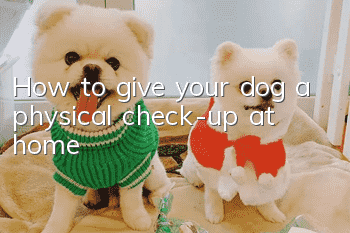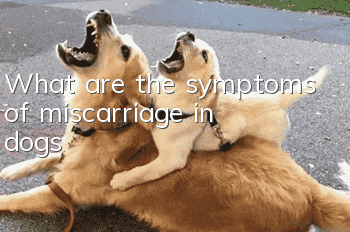How to give your dog a physical check-up at home

Regarding dog health, in fact, we have always advocated regular physical examinations. Of course, there may be some objective reasons why you may not be able to go to professional institutions regularly. For this group of people, the editor today teaches you some simple screenings that can be done at home, so as to detect symptoms and treat them as early as possible, which can reduce unnecessary trouble and financial expenses. However, it is still recommended to go to a pet hospital and have a professional doctor confirm the diagnosis.
Drink
Normal: Strong appetite, eating quickly, and eating all the food in a short time. It's not a big problem if your diet changes throughout the day.
Abnormalities: Eat less, eat slowly, not eat or approach food, and walk away after smelling it. Or an unusually strong appetite. If your dog sees food coming quickly but doesn’t eat it, it could be an oral problem.
Eye
Normal: Large and bright, the inner eyelid is pink, the cornea is clearly colored, and it looks energetic.
Abnormalities: Eye mucus, bloodshot eyes, frequent scratching of eyes, constant blinking, conjunctival flushing, tearing, and corneal turbidity.
Ears
Normal: no pain, no itching on the ear shell skin, no hair loss or dandruff. The ear canal is clean, free of secretions, odorless, and light pink.
Abnormalities: pain, itching, secretions in the ear canal, and odor.
mouth
Normal: The mouth is clean and moist, the mucosa is light red, the temperature is normal, and there is no odor. The teeth are straight, the gums are not red and swollen, there is no dental calculus, and they are not loose. The tongue is bright red, has no tongue coating, moves freely, and has no bad breath when exhaling. The mouth is closed well and there is no salivation.
Abnormalities: The oral mucosa is pale white, flushed and dry, with a foul odor and drooling.
Nose
Normal: The nose is moist, with a few sweat beads evenly distributed, and the wings of the nose can flap flexibly.
Abnormality: The nose is dry, crusty, and cracked. There is watery or viscous purulent nasal fluid in the nasal cavity.
Skin
Normal: The coat is neat and shiny, and the skin is elastic.
Abnormalities: The coat is rough and messy, lacks elasticity and luster, the skin has swelling, ulcers, erythema, rotten spots, small nodules, partial hair loss, dandruff, and itching.
Excretion
Normal: Urination and defecation are regular. The feces is earthy yellow, soft but not watery, hard but not hard, can pile up when dropped, and has no peculiar smell. The urine is light yellow and clear.
Exception:Incontinence of bowel movements. The stool is hard and sparse, dark in color, with mucus; thin and foul-smelling, watery, with mucus and pus; the stool stops. The urine is yellow and less, hematuria, turbid and opaque, and no urination.
Anus
Normal: The anus is tight, the area around the anus is clean, there are no signs of diarrhea, the anal glands secrete normally, there is no redness or swelling, and defecation is smooth.
Abnormalities: loose anus, uncleanness, filth, inflammation or ulcers around the anus.
External genitalia
Normal: no redness or swelling, no purulent secretions, no peculiar smell, no thickening, no itching, and no abnormal pigment changes.
Abnormalities: Sick male dogs may have red and swollen penises, purulent or bloody secretions from the foreskin, and often lick the penis; unilateral testicles or scrotum are swollen, etc.; female dogs may have abnormal vaginal secretions with a peculiar smell and often lick the penis. The vulva, etc.
Body temperature
Normal rectal body temperature: 38.5-39.5℃ for puppies and 37.5-38.5℃ for adult dogs.
If your dog is abnormal, please contact your pet doctor immediately.
- Causes of panosteitis in dogs | Diagnosis | Prevention and treatment methods
- How to choose a smart dog, four key points for choosing a smart and easy-to-train dog!
- Can dogs eat mooncakes?
- Can dog skin diseases be disinfected with iodophor?
- Why dogs can’t eat duck meat
- How to treat diarrhea in poodles? Treat gastrointestinal problems in dogs!
- Do Huskies exercise a lot? How much exercise does a Husky do in a day?
- How to brush your Husky’s teeth? Teach you how to brush your Husky’s teeth!
- What medicine should a two-month-old puppy take if it has diarrhea?
- What are the physical characteristics of spaniels? Are they easy to raise? How to raise them?



